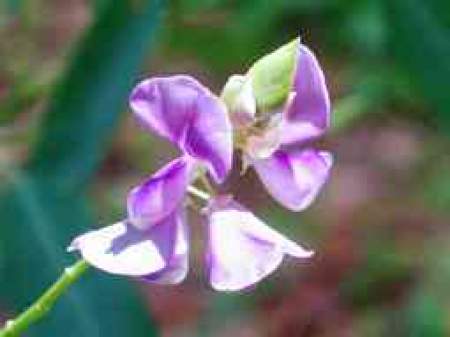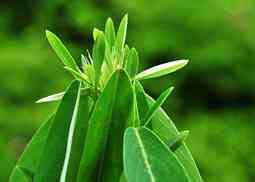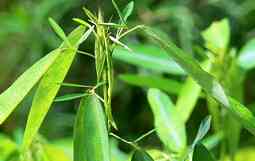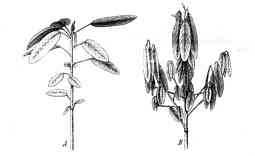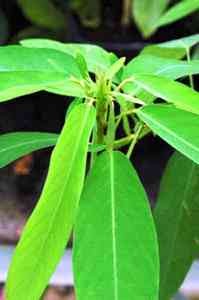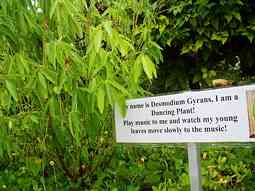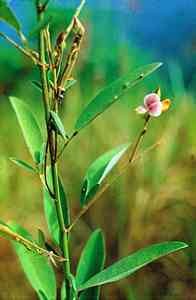The Dance Plant Desmodium gyrans
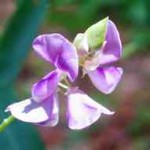
Dance Plant Have you ever watched a plant move all by itself? The unusual Desmodium gyrans, also known as the ‘Dance plant’, is another of the few plants in the world that visibly – and quickly – moves its leaves when exposed to touch, sunlight, warmth or even small vibrations – hence the reaction to music and sound.
Dance Plant
When the plant finally “goes to sleep” at night, the leaves droop downwards.
This plant is famous for being a favourite of Charles Darwin and is featured in depth in his book ‘The Power of Movement in Plants’, his final work before he died.
He had started studying the Dancing plant years earlier, having obtained a sample from his friend Sir Joseph Hooker who had collected specimens in the northeast Indian state of Sikkim.
In 1873 Darwin excitedly wrote to Hooker: “Now I want to tell you, for my own pleasure, about the movements of Desmodium…
THIS IS WHERE YOU MIGHT Discover that SPECIAL wildlife and nature holiday on a once in a lifetime Safari Tour in places such as Africa & the Middle East, The Americas & Caribbean, OR Asia & Oceania.===Find and compare safaris and wildlife tours from 796 organizers worldwide!
https://www.bookallsafaris.com/?aid=3776
The little leaflets never go to sleep, and this seems to me very odd; they are at their games of play as late as 11 o’clock at night and probably later.”
Dance plant asleep Dance plant Darwin didn’t seem to notice the response to sound, but thought the twitching reflex was in response to drops of water which he had sprayed on it, rather like shrugging off a cold shower.
However its affinity with music certainly seems to be well documented. Nomenclature: Desmodium gyrans has later been renamed as Codariocalyx motorius, both names reflecting this plant’s talent for movement visible to the naked eye.
Besides ‘Dancing plant’, other common names include ‘Telegraph plant’ and ‘Semaphore plant’ after the leaf movements, which resemble semaphore signals or Morse code.
Dance Plant Perennial Shrub
Desmodium gyrans Codariocalyx motorius Description: Desmodium gyrans is a perennial, leguminous shrub, part of the Fabaceae family.
To be honest, it is nothing special to look at, until you look more closely and do a bit of reading up.
It is native to tropical Asia and earns the name from its habit of rotating and jerking its leaves on their axes.
Find and compare Multi-Day Online Culinary Courses
Thinking of stepping up your culinary skills? Or have you been dreaming of going on a scrumptious gastronomic adventure?
Why not consider joining one of our many delectable Online Cooking Courses?
Through live-stream video sessions, you’ll discover authentic recipes, whip up mouthwatering dishes, as well as learn various culinary tips & tricks from passionate chefs from across the globe.
If you’ve been looking for a convenient & fun way for you to sharpen your skills and tantalize your taste buds without having to leave the comfort of your home, our Multi-Day Online Culinary Courses are your best bet!
++++++++++++++++++++++++++++++++++++++++++++
The foliage is very simple; it has a very airy look to it with delicate stems that bear the leaves.
Leaves are attached to the stem in an odd way, almost jointed, both at the very base of the leaf and where the leaf joins the stem.
This makes them floppy and quite unlike normal leaves. Each leaf distinctively sprouts two miniature “satellite” leaves near the stem, which serve as sun samplers to help determine optimal position in regards to available sunlight.
The rare Dancing plant seasonally sports small purple flower blossoms, which feature two large petals with white streaks along their centers.
Mature dance plants reach heights of about 5 feet tall.
It is a fascinating plant, perfect for children to grow and have fun with – the plants really do “dance” in their own way in response to sound.
Desodium gyrans Dancing Plant
Desodium gyrans Dancing Plant They grow natively in Asian territories like Bangladesh, Cambodia, China, India, Malaysia, Taiwan, Thailand and Vietnam and propagate via seeds or cuttings.
Culture: These lively tropical plants must be kept warm as they are not winter hardy and are prone to freezing.
Flowering Dancing plants flourishes in temperatures ranging from 22 to 35°C (71 to 95°F). They grow equally just fine in containers. Plants also thrive in full sun and tolerate conditions of partial shade.
Grown best gown in nutrient-rich, well-drained soils, though also being a member of the pea family, they have the ability to fix nitrogen from the air and are therefore adaptable to most soil types, including those of poor quality.
Keep the soil moist in warm seasons, but avoid over-watering during the cool seasons.
In fact Dancing plants generally are easy to grow and require little maintenance from owners.
Sowing Dance Plant seeds:
Dancing Plant flower
Cultivation:
Remove the plastic cover once they have germinated.
The seedling leaves will not move, but about three weeks later, real leaves will appear that will.
The soil must be kept consistently moist, without drying out between watering. Once the seedlings are well established, the plants can be transplanted to bigger pots.
Dance Plant Cultivation
Of Interest:
This extraordinary plant came incredibly close to extinction, but recent research by Dr. Pradit Kampermpool at the Kampermpool’s plant nursery in Udon Thani Province, in tropical northern Thailand, has secured the continued existence.
In fact this tropical flowering shrub adds a fascinating and beautiful conversation piece to any garden, makes an attractive houseplant, and will give dancing displays on a sunny windowsill.
Somewhere I read it likes the Grateful Dead, in other places that it responded better to “muzak” than heavy rock.
It seems music is a personal choice for plants too…
Dancing plant in flower.
Marc Vijverberg
Marc Vijverberg
Not so innocent now, vegetarians.
Spain Info
Spain info covers local towns with local accommodation. also covers info local days out in Spain on the Mediterranean. Has information on gardening in Spain Mediterranean style. with information on cooking Mediterranean style.
also covers Bowls Clubs Golf Go Karting fishing Caves and other sports here in the Mediterranean.
Spain info also lists the Local Hot Water Spas many of them dating back to Roman times.
Dance Plant
Opt 100 Feb 21 21 H July 9 H 67 Dance Plant 15 H 95 Dance Plant 25
Spain Info dance plant, San Francisco De Asis, Urb Marina, San Fulgencio, 03177, Alicante, Spain. 38n21, 0w29.
Site Disclaimer
Disclaimer: Whilst every effort has been made to provide accurate information, no liability will be accepted for misinterpretation, misrepresentation, errors or omissions - the information provided by our Websites is for use as a guide only and is issued in good faith as information..
All photographs images and FILM material is subject to the understanding that as they are in the public domain they can be used and shared as seen to be appropriate and unless showing a sign that they are covered by copyright law. This also covers Social media operations.
1999---2026
